Introduction to Cell Organelles and Their Functions
Cell organelles are the cellular constituents, which are found within the cell.
- The fundamental structural and operational unit of a living being is a cell. According to cell theory concepts, a cell is the fundamental unit of life that gives anything the ability to breathe and is self-sufficient in performing all of an organism’s essential activities.
- The cells give the system shape and structure as well as perform a variety of other duties.
- Organelles, a collective term for the many functional structures found in cells, play a variety of roles in cellular processes.
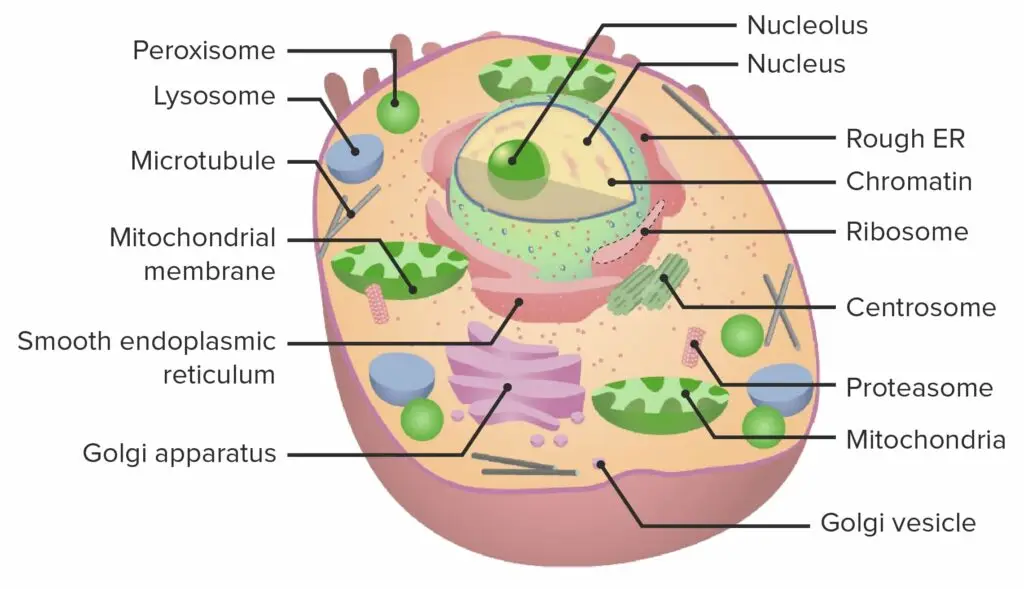
What are the organelles of a cell?
Cell organelles are the cellular constituents. These cell organelles, which are found in the cells and differ in their forms and functions, include both membrane-bounded and non-membrane-bounded organelles.
For the cell to function normally, they coordinate and work effectively. Some of them work by giving shape and support, while others are involved in a cell’s movement and reproduction.
The cell has a variety of organelles that are divided into three groups based on whether or not they have a membrane.
- Organelles without membranes: Non-membrane bounded cell organelles include the cell wall, ribosomes, and cytoskeleton. They can be found in both eukaryotic and prokaryotic cells.
- Organelles that are only connected to membranes– vacuole, lysosome, Golgi apparatus, and endoplasmic reticulum are found solely in eukaryotic cells called Single membrane-bound organelles.
Organelles with two membranes linked to them include the nucleus, mitochondria, and chloroplast, which are only found in eukaryotic cells.
Cell Organelles and Their Functions
Plasma Membrane
- The terms cell membrane and cytoplasmic membrane are also used to describe the plasma membrane. A lipid bilayer and proteins make up the cell membrane, which is selectively permeable.
- Both plant and animal cells contain the plasma membrane.
- By allowing specific elements to enter and exit the cell as needed, it performs the role of a selectively permeable membrane.
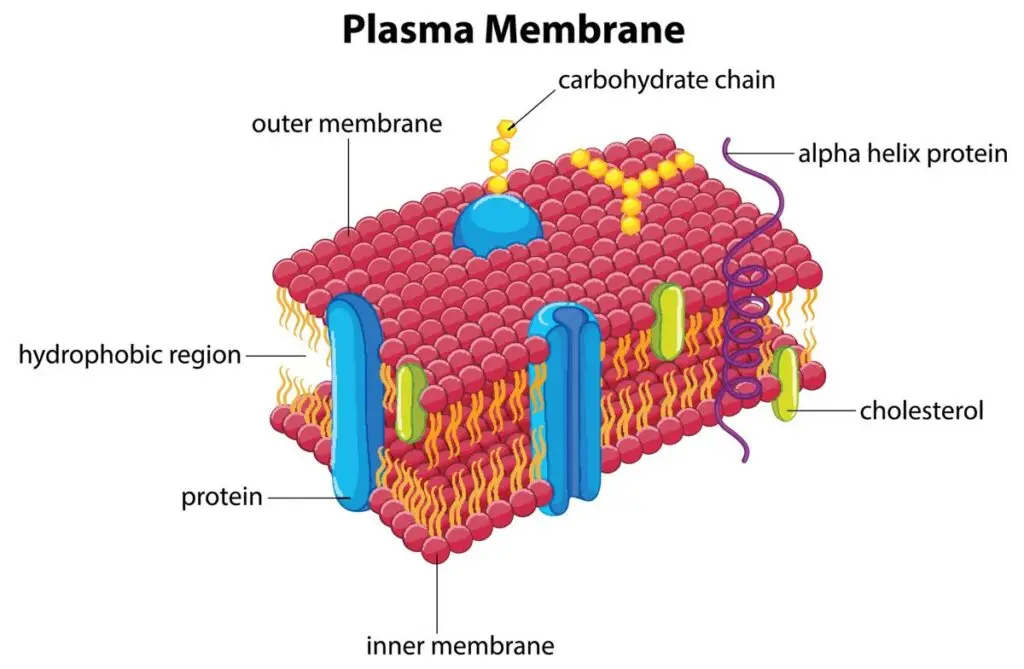
- The cell membrane in an animal cell performs the dual roles of giving the cell its shape and shielding its internal components.
- It is referred to as the fluid mosaic model since it is based on the structure of the plasma membrane. The plasma membranes are subcellular structures comprised of a lipid bilayer, in which the protein molecules are embedded, in accordance with the fluid mosaic hypothesis.
Cytoplasm

- Animal and plant cells both include cytoplasm.
- Between the cell membrane and the nucleus these are jelly-like substances.
- They are mostly made of water, organic chemicals, and inorganic substances.
- One of the vital parts of a cell is its cytoplasm, which contains all of the cell’s organelles.
- These cellular organelles contain enzymes that are primarily in charge of regulating all metabolic activity occurring inside the cell and serve as the sites of the majority of cellular chemical processes.
Nucleus
- Every eukaryotic cell has a double-membraned organelle called the nucleus.
- It is the largest organelle and serves as the command center for cellular operations as well as the DNA repository for the cell.
- The nucleus is a black, spherical structure that is encircled by a nuclear membrane.
- It is a porous membrane that forms a barrier between the cytoplasm and the nucleus.
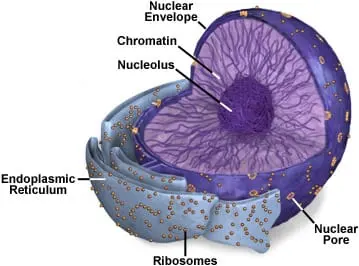
- Nucleolus, or tiny spherical entities, are found inside the nucleus.
- It also contains chromosomes, a crucial component.
Endoplasmic Reticulum
The Endoplasmic Reticulum is a network of fluid-filled membranous tubes. They are the cell’s transport system and are responsible for moving materials around the cell. The endoplasmic reticulum comes in two varieties:
- Rough Endoplasmic Reticulum: The production of proteins is carried out by the rough endoplasmic reticulum, which is made up of cisternae, tubules, and vesicles.
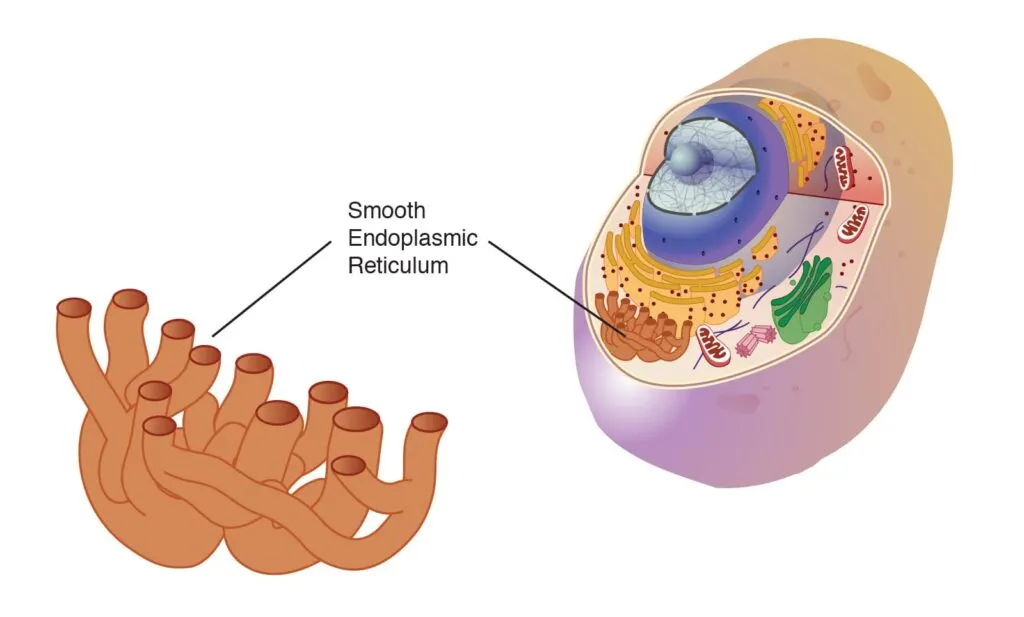
- Smooth Endoplasmic Reticulum: This organelle serves as a storage area and is involved in the synthesis of lipids and steroids, as well as the detoxification of the cell.
Mitochondria
- Because they generate energy-dense molecules for the cell, mitochondria are referred to as the powerhouses of the cell.
- In many species, the mitochondrial genome is transmitted from the mother. It is a sausage-shaped organelle with two membranes linked to it that is present in practically all eukaryotic cells.
- Its lumen is split into two different aqueous compartments by double membranes.
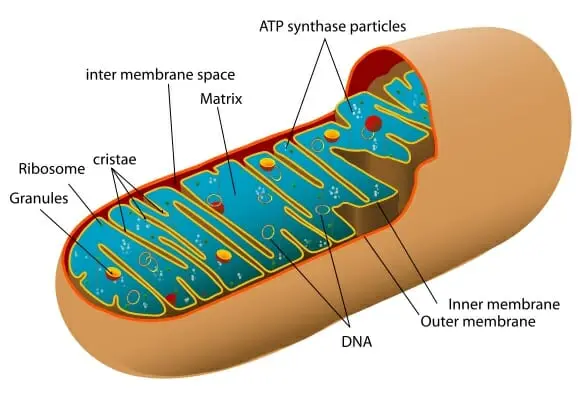
- The outer membrane creates a continuous barrier with the cytoplasm, whereas the interior compartment, known as the “matrix,” is folded into cristae.
- They are typically either round or oval in shape and range in size.
- The cell’s mitochondria are the locations of aerobic respiration, which generates ATP as well as energy and aids in chemical change.
Plastids
Large, membrane-bound organelles called plastids hold pigments. Plastids can be classified into three groups based on the sort of pigments they contain:
- Chloroplast: Double membrane-bound organelles that can take on a variety of shapes, including spherical, discoid, oval, and ribbon.
- The mesophyll cells of leaves, which house the chloroplasts and other carotenoid pigments, contain them.
- The photosynthetic process depends on the pigments’ ability to store light energy. A region known as the stroma is enclosed by the inner membrane.
- Thylakoids, which are flattened disc-shaped chlorophyll-containing structures, are grouped like a stack of coins.
- Each pile is referred to as a granum (plural: grana), and stromal lamella are flat, membranous tubules that connect the thylakoids of various grana.
- The stroma of chloroplasts likewise has double-stranded circular DNA, 70S ribosomes, and enzymes necessary for the production of proteins and carbohydrates, just like the mitochondrial matrix does.
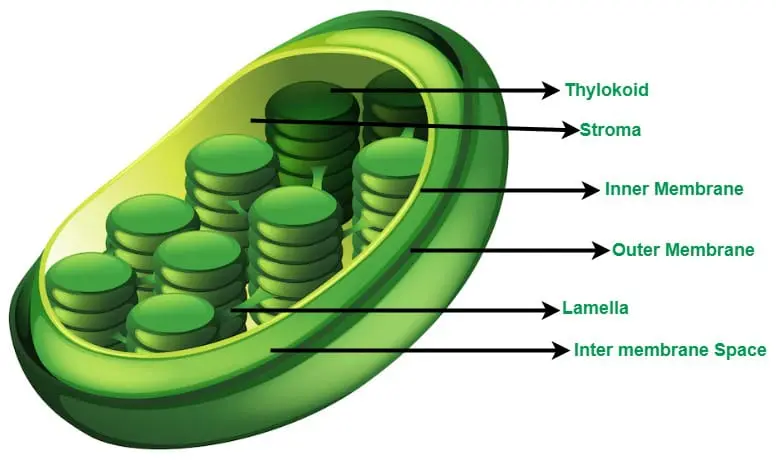
- Chromoplasts: The chromoplasts include fat-soluble carotenoid pigments, such as xanthophylls and carotene, which give plants their distinctive colours, such as yellow, orange, and red.
- Leucoplasts: Colorless plastids that serve as food storage. Aleuroplasts store proteins, elaioplasts store oils and lipids, and amyloplasts store carbs (such as the starch in potatoes).
Ribosomes Of Cell Organelles
- In close proximity to the endoplasmic reticulum are ribosomes, significant non-membrane-bound cytoplasmic organelles.

- Numerous cells have microscopic particles called ribosomes, which are primarily made up of 2/3 RNA and 1/3 protein.
- They are referred to as the 70s or the 80s (found in prokaryotes) (found in eukaryotes). Svedberg’s Unit, which begins with the letter S, stands for size and density.
- Two subunits make up 70S and 80S ribosomes, respectively.
Golgi Apparatus Of Cell Organelles
- The Golgi Complex is another name for the Golgi Apparatus.
- It is a membrane-bound organelle made up primarily of cisternae, which are a series of flattened, stacked pouches.
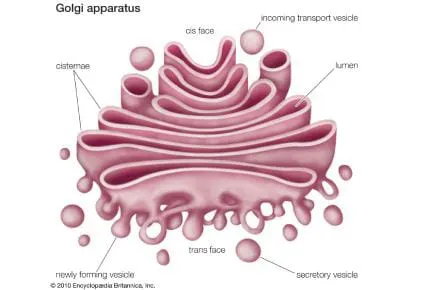
- Proteins and lipids are predominantly moved, altered, and packaged by this cellular organelle to reach specific locations.
- Both plant and animal cells contain the Golgi apparatus, which is located in the cytoplasm of a cell.
Centrosome Of Cell Organelles
- Two centrioles, or mutually perpendicular structures, form the centrosome organelle.
- Each centriole is made up of nine tubulin protein peripheral fibrils that are evenly spaced apart and are made up of interconnected triplets.
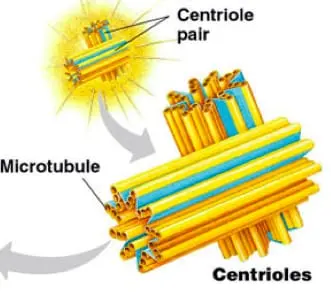
- The hub or central portion of the centriole is made of protein.
- The hub’s radial spoke, which is formed of proteins, joins the peripheral fibrils.
- During cell division, the centrioles from the basal bodies of the cilia and flagella give rise to spindle fibres.
Vacuoles
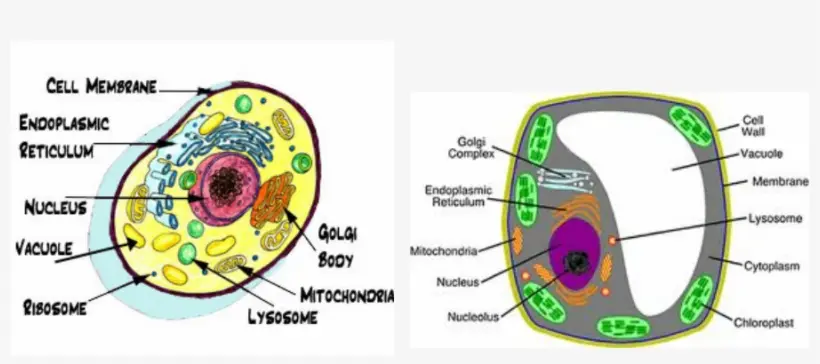
- Vacuoles are typically described as irregularly shaped storage bubbles that are present in cells.
- They are membrane-enclosed organelles that contain fluid.
- The food or other resources that a cell might require to thrive are kept in the vacuole.
- Additionally, it keeps waste materials in storage.
- Vacuoles eventually dispose of the waste products.
- The remainder of the cell is thereby shielded from pollution.
- The size and quantity of vacuoles differ between animal and plant cells. The vacuoles in plant cells are larger than those in animal cells.
Also Read About:

